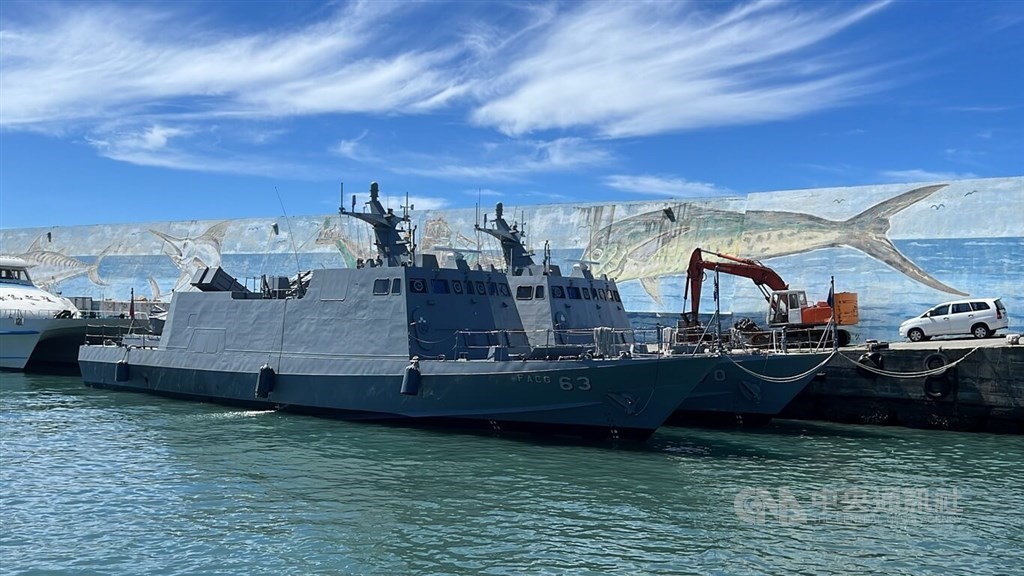Taipei, April 5 (CNA) Taiwan’s Han Kuang exercises, its largest annual military drills, began Saturday, with experts saying that the extended 14 days of wargames reflected a response to China’s increasing “gray zone” activities and its potential to carry out a full-scale invasion of Taiwan.
This year’s Han Kuang exercises, the 41st edition, kicked off with round-the-clock computer-aided wargames, using the U.S.-built Joint Theater Level Simulation (JTLS) platform. The live-fire component of the exercises is scheduled to be held July 9-18.
The wargames will create scenarios in which the frequent military exercises by the Chinese People’s Liberation Army (PLA) escalate into a real attack on Taiwan, according to Major General Tung Chi-hsing (董冀星), director of the Ministry of National Defense’s (MND) joint operations planning division.
The Han Kuang wargames will also simulate PLA “gray zone” activities, which are defined as provocative or aggressive actions that fall just short of an open conflict, Tung said at a press briefing Wednesday.
On Friday, Democratic Progressive Party (DPP) Legislator Wang Ting-yu (王定宇) said that the 2025 wargames would be longer than in previous years, running for two weeks compared to eight days in 2024, which would indicate an expansion of the simulations.
In Taiwan, the public used to think that a “first strike” by China would likely come in the form of a missile attack, said Wang, a member of the Legislature’s Foreign Affairs and National Defense Committee, in an interview with CNA.
However, it is more realistic now to think that a “first strike” would involve equipment such as maritime militia vessels, sand dredgers, and drones, which as commonly used in “gray zone” operations, Wang said.
He said Taiwan’s military now has to consider how to deal with situations that may go beyond traditional force-on-force confrontations. These include how to respond to “gray zone” activities within the bounds of international law, while preventing Chinese military drills from escalating into a full-scale invasion, Wang said.
Such complex scenarios require detailed planning and simulation, which makes the wargames more time-consuming, he said.
Su Tzu-yun (蘇紫雲), director of the Division of Defense Strategy and Resources at the Taiwan’s Institute for National Defense and Security Research, expressed similar views Friday, saying that Taiwan’s wargames this year were extended to two weeks most likely to facilitate more scenarios involving “gray zone” activities.
When the PLA is conducting its naval and air patrols around Taiwan, it usually deploys six to 10 warships, Su noted in an interview with CNA.
If each of those PLA warships was equipped with vertical launching systems, there could be around 500 land-attack cruise missiles ready to strike targets across Taiwan, he said.
Those cruise missiles could reach targets across Taiwan within three minutes, leaving defense forces with even less response time than if Dongfeng missiles were launched across the Taiwan Strait from mainland China, Su said.
It is therefore critically important to simulate such scenarios in Taiwan’s wargames, particularly as the threats posed by PLA warships have become more frequent in recent years, he added.
Preparing for 2027
Su also noted that Defense Minister Wellington Koo (顧立雄) had said in a recent legislative hearing that this year’s Han Kuang exercises would be based on a hypothetical invasion by the PLA in 2027.
That is because 2027 will mark several milestones in China, Su said, listing landmark events such as the 100th anniversary of the PLA’s founding, the start of Chinese President Xi Jinping (習近平) fourth term in office, and the 12th year of Xi’s ongoing military reforms.
Such milestones could provide political and military incentives for Xi, who will turn 74 in 2027, to take certain actions, including a full-scale invasion of Taiwan, Su said.
The focus of this year’s Han Kuang exercises on a possible 2027 invasion reflects a “worst-case scenario” and risk management approach by Taiwan’s military, he said.
This year’s exercises can test how the MND would respond in the event of a 2027 invasion and assess any shortcomings in the readiness of Taiwan’s armed forces and its arsenal of weapons, Su said.
The year 2027 is seen by some military experts as a potential flashpoint for Chinese military action against Taiwan. It came to the fore in 2021, when Philip Davidson, who was then head of the U.S. Indo-Pacific Command, said that Taiwan was “clearly one of their [China’s] ambitions” and warned that “the threat is manifest during this decade, in fact, in the next six years.”
Since then, the year 2027 has been referred to as the “Davidson window,” with several U.S. military and political figures warning that China is aiming to develop the capability to invade Taiwan by 2027 and that both the U.S. and Taiwan should be prepared for such an eventuality.
